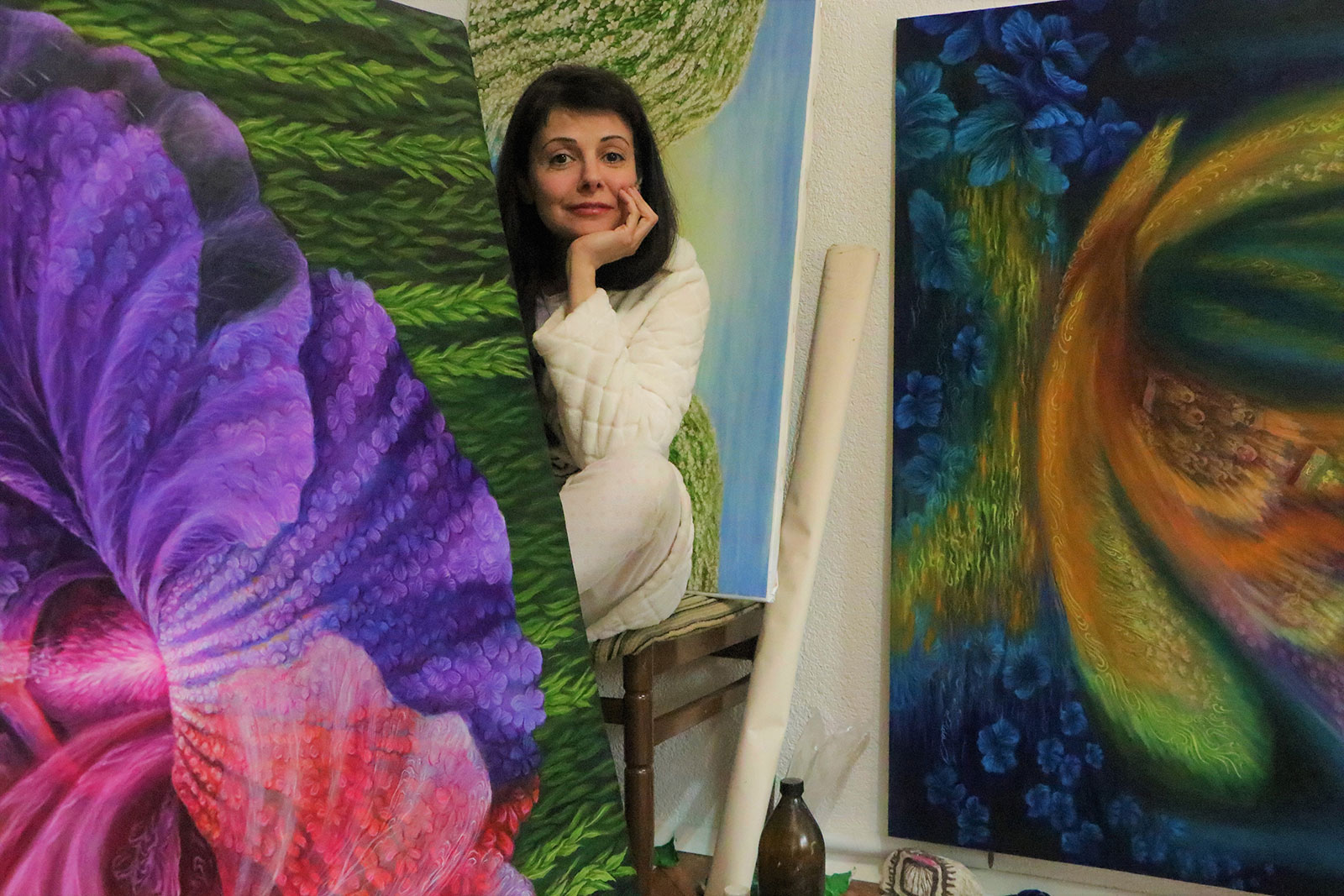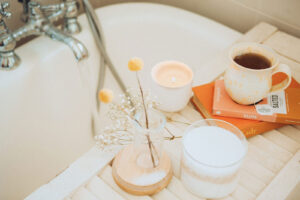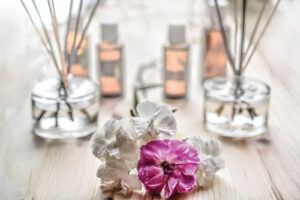When it comes to supporting the cancer community, everyone has something to offer. For artist Lida Sherafatmand, it’s her life’s work.
The Iranian painter has harnessed the powerful influence of art within medical spaces to benefit cancer warriors and their quality of life. Prints of her artwork have been donated to the clinical trials unit at Churchill Hospital, a teaching hospital in Oxford, England, as well as to hospitals and university oncology departments in North Macedonia.
“I cannot help with the actual cancer cure, but I can help rebuild the emotional aspect for dealing with the challenge,” says Sherafatmand, a long-time donor to the United Kingdom’s Worldwide Cancer Research organization.
In the past few years, Sherafatmand’s paintings have served as a means to explore the gift of comfort for those going through extremely distressing situations—both physical and emotional. While Sherafatmand has never experienced cancer herself, she frequently heard about new cancer cases nearly every week and wondered how she could help.
Sherafatmand is certainly no stranger to the afflictions that harrowing experiences can have on us. At a young age in Iran, Sherafatmand was forced to face the growing familiarity of a war-torn country experiencing a revolution. As a refugee in Malta later on, she grew to understand the grief of a lost identity and hardships beyond her previous perceptions. It’s because of those moments that she has set her sights on extending a hand to others.
“I lived a life full of challenges,” says Sherafatmand. “All of those destabilizing events always made me look for somewhere that I feel is a safe environment. When a plant had come out with a little flower or I’d see a new drop of water, I would imagine that I was living in that spot, because it is so serene and nice and tender and protected. Nearing my adult life, I noticed that flowers do offer that space to us humans if we give a bit of a time to notice them.”
And notice the flowers Sherafatmand does. Her fine art paintings burst with them, to an almost abstract degree. But her process is more than simply creating pretty flora on a canvas.
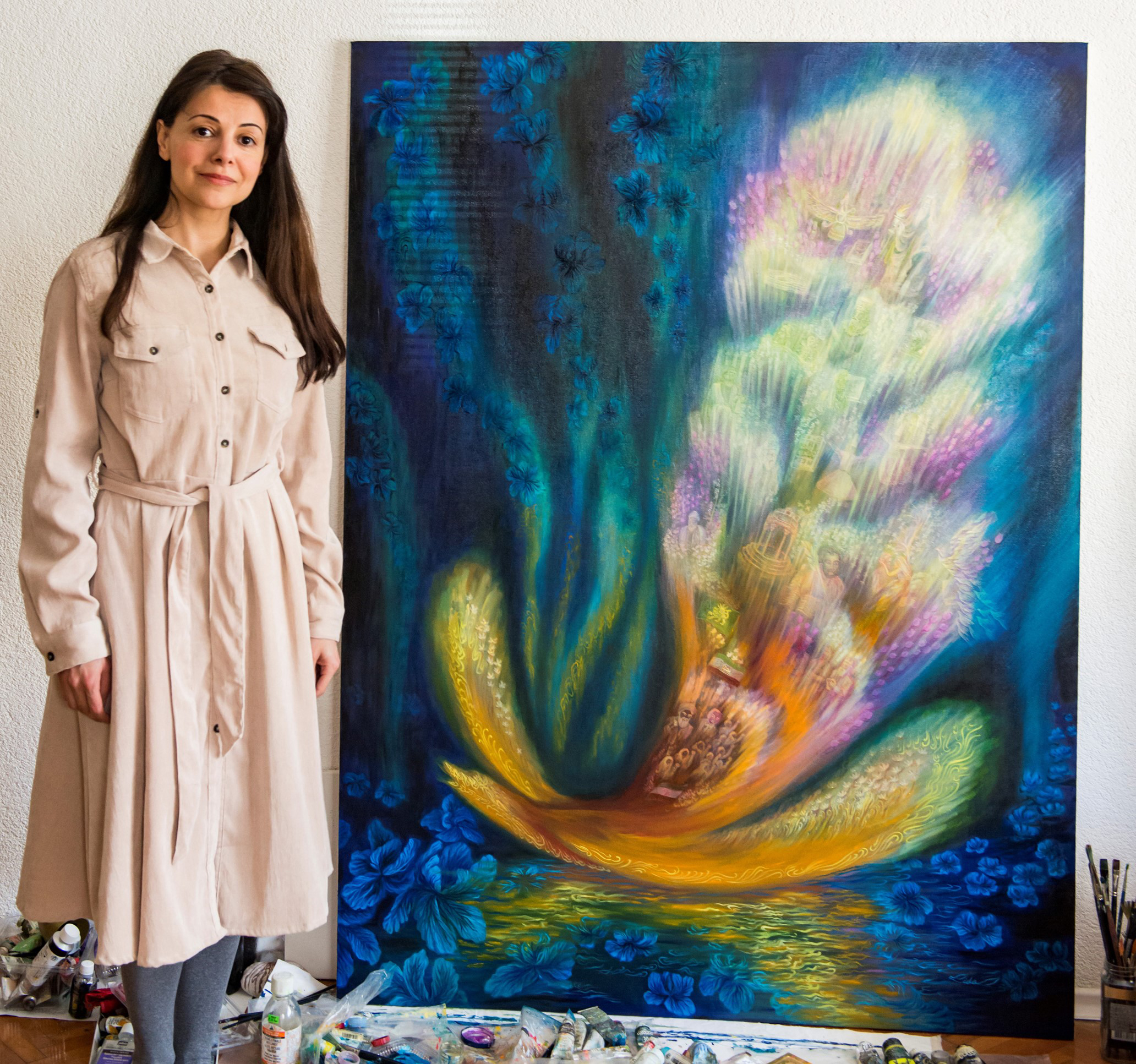
“Every flower has a specific healing quality, in terms of the effect it would have on our emotional state—for example, lavender can help a little bit with the feelings of depression, or hopelessness, things like that,” Sherafatmand explains. “I know it doesn’t work on everyone, but I tried to symbolically match the healing quality of the flower within the painting that I’m creating.”
Sherafatmand takes it another step further in her health collection for cancer warriors. She binds nature and science together in her work to create what she deems a realistic balance of one’s situation. Through the addition of a DNA strand or the illustration of the power of a cell’s nucleus, this fluidity between creativity and intelligence offers what Sherafatmand calls an “abundance” of energy and force to get through difficult times.
“It’s this artistic movement which brings together nature and fantasy as a way to enlarge our mindset or refresh our minds for dealing with crises,” says Sherafatmand.
The thoughtfulness behind Sherafatmand’s health collection doesn’t go unnoticed. Past studies have shown that artwork in a medical setting has a noteworthy impact on the well-being of patients.
In a 2017 study in the International Journal of Qualitative Studies on Health and Well-being, researchers concluded that “although visual art occupies the background in patients’ experience of hospitals, it influences patients’ experience of safety, comfort, time and identity” by reducing anxiety and improving hospital experience.
For Sherafatmand’s work in particular, the feedback from patients is something that will stay with her forever.
“The feedback has been rather positive. Patients do feel a calming presence with these paintings,” says Sherafatmand. “A woman who had a limited time for living—she had a very aggressive brain tumor—saw the images, these paintings, and she asked if she could have the prints and told her sister to tell me that these images have brought peace to her heart. This was very valuable to me.”
Patients aren’t the only ones appreciative of the soothing imagery. “Hospitals can be intimidating places and we are always looking for ways to improve patient experience. An important aspect of this is the atmosphere on our clinical trials ward,” said Sarah Blagden, the professor who leads the Churchill Hospital unit, in a press release. “We are very grateful to Lida for kindly donating her beautiful artwork.”
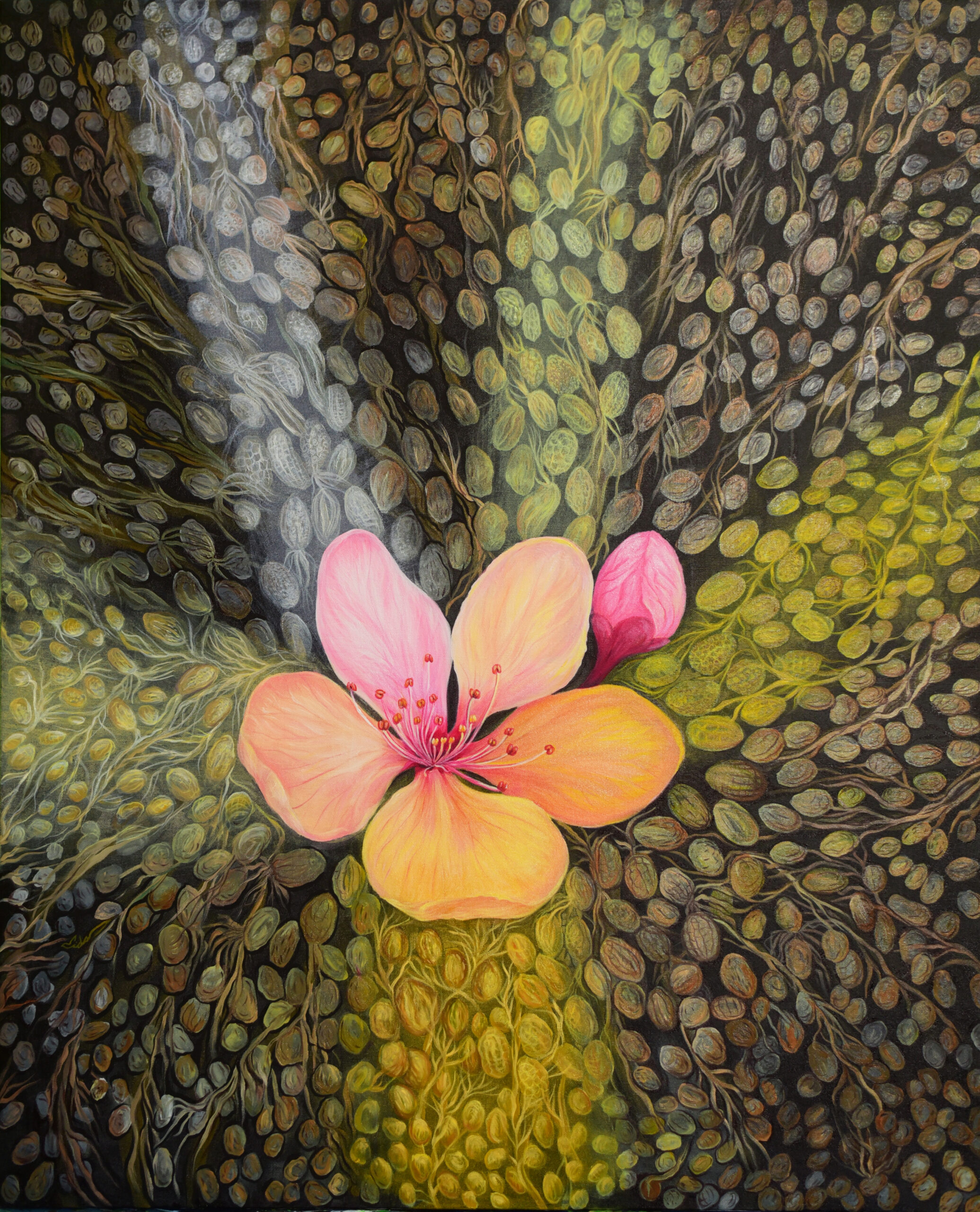
Sherafatmand is in constant collaboration with the institutions she has donated her paintings to thus far. The positive response from patients and professionals that she’s received in conjunction with previous supportive data has encouraged even more formal research into the effects of artwork in a health care setting and has made the case for further investment in such art. She hopes the impact only grows from here.
“If there is more formalized proof for it, maybe more hospitals will welcome having art pieces in the patients’ rooms instead of just a blank wall,” says Sherafatmand.
View Lida Sherafatmand’s artwork at lida.gallery. For information on acquiring copyright-free prints and free reproductions of Sherafatmand’s paintings for health care settings, visit lida.gallery/health.

